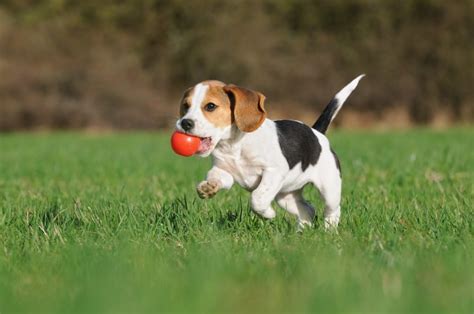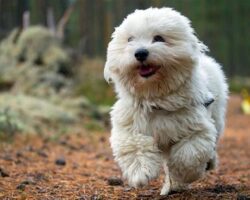Characteristics of dog breeds suitable for hot weather
Dogs, just like humans, have different preferences and capacities when it comes to weather. While some dog breeds thrive in colder climates, there are certain characteristics that make other breeds more suitable for hot weather conditions. If you live in a region with hot temperatures, it is important to choose a dog breed that can handle the heat and stay comfortable. Below are some key characteristics to look for in dog breeds that are well-suited for hot weather.
1. Short Coat: One of the most important characteristics of dog breeds suitable for hot weather is a short coat. Breeds with shorter fur are able to dissipate heat more efficiently and stay cooler in high temperatures. Examples of dog breeds with short coats include Chihuahuas, Boxers, and Dalmatians.
2. Moderate Exercise Needs: While exercise is important for all dogs, breeds that are more resilient to hot weather tend to have moderate exercise needs. This means they can tolerate shorter walks and exercise sessions without becoming exhausted or overheated. Breeds like Bulldogs, Basset Hounds, and Pugs fall into this category.
3. Heat Tolerance: Some dog breeds are simply better equipped to handle hot climates due to their genetic makeup. These breeds have evolved in areas with warmer temperatures and have developed the ability to tolerate heat. Examples of heat-tolerant dog breeds include the Basenji, Afghan Hound, and Saluki.
Factors to consider when choosing a dog breed for hot weather
When it comes to choosing a dog breed for hot weather, there are several factors that you need to consider. It’s important to remember that not all dog breeds are suitable for hot climates, as some breeds are more prone to heat exhaustion and heatstroke. By taking certain factors into consideration, you can ensure that you choose a dog breed that will thrive in hot weather conditions.
1. Coat type: The type of coat that a dog breed has plays a crucial role in how well they can handle hot weather. Breeds with thick, dense coats, such as Huskies or Saint Bernards, are more susceptible to overheating. On the other hand, breeds with shorter coats, like Boxers or Greyhounds, are better equipped to handle the heat. Consider the climate of your area and choose a breed with a coat type that is appropriate for the temperatures.
2. Size and body type: The size and body type of a dog can also affect their ability to tolerate hot weather. Smaller breeds generally have a harder time staying cool compared to larger breeds, as they have less surface area through which to dissipate heat. Additionally, dogs with short muzzles, such as Bulldogs or Pugs, may have more difficulty breathing in hot weather. Keep these factors in mind when selecting a breed for hot climates.
3. Activity level: Consider the activity level of the dog breed you are considering. Some breeds, like Border Collies or Australian Shepherds, are known for their high energy levels and need plenty of exercise. In hot weather, it may be challenging to provide them with sufficient physical activity without risking overheating. If you live in a hot climate, choose a breed that has a lower activity level and doesn’t require intense exercise to prevent heat-related issues.
By taking into account the coat type, size and body type, and activity level of a dog breed, you can make an informed decision when choosing a dog that can handle hot weather. It’s crucial to prioritize your dog’s well-being and ensure they are comfortable and safe, even during the hot summer months.
Top 5 dog breeds that thrive in hot climates
When it comes to owning a dog in hot climates, it’s important to choose a breed that can handle the heat and thrive in these conditions. Some dog breeds are naturally more tolerant of hot weather, thanks to their specific characteristics and adaptations. Here, we will discuss the top 5 dog breeds that excel and thrive in hot climates, making them an ideal choice for those living in warmer regions.
1. Chihuahua: Known for their small size and big personality, Chihuahuas are well-suited for hot climates. Their tiny bodies and short coats allow them to regulate their body temperature more effectively. However, they still need to be protected from extreme heat and provided with shade and fresh water.
2. Greyhound: Despite their reputation as racing dogs, Greyhounds are also excellent companions in hot climates. With their thin coats and lean bodies, Greyhounds have a natural ability to dissipate heat. They are also known for their lazy nature, which means they prefer lounging around indoors during the hottest parts of the day.
3. Dalmatian: Dalmatians are not only famous for their unique spots but also their adaptability to hot weather. Their short, sleek coats help them stay cool by allowing air to circulate close to their skin. However, it’s important to remember that Dalmatians are active dogs and still require regular exercise, even in hot climates.
4. Basenji: Originating from Central Africa, the Basenji is often referred to as the “barkless dog” and is well-suited for hot climates. Their short, fine coats and long legs make them excellent runners and help them cool down quickly. Basenjis are known for their independent nature and require plenty of mental and physical stimulation.
5. Australian Cattle Dog: Despite their name, Australian Cattle Dogs can adapt well to hotter climates due to their double coat. Their dense outer coat protects them from the sun, while their inner coat helps regulate their body temperature. However, it’s crucial to provide them with shade and access to water to prevent overheating.
| Breed | Characteristics |
|---|---|
| Chihuahua | Small size, short coat, high tolerance to heat |
| Greyhound | Thin coat, lean body, prefers staying indoors during hottest parts of the day |
| Dalmatian | Short, sleek coat, active nature |
| Basenji | Short, fine coat, long legs, excellent runner |
| Australian Cattle Dog | Double coat with outer coat for sun protection, inner coat for temperature regulation |
By choosing a dog breed that is naturally suited for hot climates, you can ensure that your furry friend remains comfortable and happy. However, it’s important to remember that all dogs, regardless of their breed, need to be protected from extreme heat. Providing adequate shade, access to fresh water, and avoiding strenuous exercise during the hottest times of the day are essential for keeping your canine companion cool and safe.
How to keep dogs cool in hot weather
Dogs are known to be highly sensitive to hot weather conditions, and as responsible pet owners, it is our duty to take necessary precautions to keep them cool and comfortable during hot summer months. Here are some tips and techniques that can help you keep your furry friends cool and safe when the temperatures rise.
1. Provide ample shade: It is essential to make sure your dog has access to shady areas at all times. This can be achieved by setting up a dog-friendly shaded spot in your yard, using umbrellas or canopies to create shade, or even bringing your dog indoors during the hottest parts of the day.
2. Keep them hydrated: Just like humans, dogs need to stay hydrated in hot weather. Ensure that your furry friend always has access to fresh and clean water, both indoors and outdoors. Consider using water bowls that are designed to keep water cool for longer periods.
3. Avoid hot surfaces: Asphalt and concrete can become scorching hot during summers, and walking on such surfaces can be extremely uncomfortable for dogs. Opt for grassy areas or walk your dog early in the morning or late in the evening when the ground is cooler.
4. Use cooling vests or mats: There are various cooling vests and mats available in the market that are specially designed to keep dogs cool. These products are equipped with cooling gel technology that can help regulate your dog’s body temperature.
5. Limit exercise during peak heat: Excessive exercise in hot weather can lead to heat exhaustion and dehydration in dogs. It is important to adjust your dog’s exercise routine accordingly. Opt for shorter walks, play indoor games, or engage in activities that do not involve intense physical exertion.
6. Provide frozen treats: Dogs love treats, and what better way to keep them cool than by giving them frozen treats? You can make homemade treats using ingredients like yogurt, fruits, or even freeze their regular treats. Just make sure the treats are dog-friendly and do not contain any harmful ingredients.
7. Consider using fans or cooling pads: Fans can help circulate the air and create a cool breeze in the room where your dog spends most of their time. Additionally, cooling pads can serve as a comfortable spot for your dog to rest, as they are designed to absorb and dissipate heat.
By implementing these simple yet effective measures, you can ensure that your beloved canine companion stays cool and safe during hot weather conditions. Remember, it is crucial to pay attention to your dog’s behavior and consult a veterinarian if you notice signs of heatstroke or any other health issues.
Importance of proper hydration for dogs in hot weather
Proper hydration is of utmost importance for dogs, especially in hot weather. Dogs are more susceptible to heatstroke and dehydration than humans, as they do not sweat like us. They rely on panting and drinking water to regulate their body temperature. It is crucial for dog owners to ensure that their furry companions have access to clean and fresh water at all times.
One of the key factors to consider when it comes to proper hydration for dogs in hot weather is the amount of water they need to drink. The general rule of thumb is that a dog should consume around one ounce of water per pound of body weight per day. However, this amount may vary based on various factors such as activity level, size, age, and weather conditions.
List of factors to be considered for proper hydration:
- Activity Level: Dogs who are more active will naturally require more water to stay hydrated. Increased physical activity leads to more panting, which results in greater water loss.
- Size: Larger dogs will generally need more water than smaller breeds, as they have a greater amount of body mass to cool down.
- Age: Puppies and senior dogs are more vulnerable to dehydration and heatstroke, so it is crucial to provide them with extra water and keep them in a cool environment.
- Weather Conditions: Hot and humid weather can cause dogs to sweat more and lose water rapidly, making it essential to provide additional water during these conditions.
Table showing water intake recommendations based on dog weight:
| Weight Range (lbs) | Water Intake (ounces) |
|---|---|
| 10 – 20 | 10 – 20 |
| 20 – 40 | 20 – 40 |
| 40 – 60 | 40 – 60 |
| 60 – 80 | 60 – 80 |
| 80 – 100 | 80 – 100 |
Dehydration can have severe consequences for dogs, including organ failure and even death. Some common signs of dehydration in dogs include excessive panting, dry and sticky gums, loss of skin elasticity, sunken eyes, lethargy, and thick saliva. If you suspect your dog is dehydrated, it is essential to seek veterinary care immediately.
As responsible dog owners, it is our duty to prioritize the proper hydration of our furry friends, especially during hot weather. Always make sure to provide plenty of clean, fresh water for your dog and monitor their water intake. With proper hydration, we can ensure that our beloved pets stay healthy and happy even in the scorching heat.
Grooming tips for dog breeds in hot weather
Grooming plays a crucial role in keeping our furry friends healthy and comfortable, especially in hot weather. Dogs are more susceptible to heatstroke and skin irritations during the summer months, making it essential to maintain their grooming routine. In this blog post, we will explore some grooming tips specifically tailored for dog breeds in hot weather.
Regular Brushing: Brushing your dog regularly is important in all seasons, but it becomes even more crucial during hot weather. This helps to remove loose fur and prevents matting, which can trap heat and cause discomfort. Additionally, brushing helps to distribute the natural oils on the dog’s skin, which acts as a protective barrier against the sun.
Consider Short Haircuts: While not all dog breeds are suitable for short haircuts, trimming their fur can provide some relief in hot weather. Consult with a professional groomer to determine if your dog’s breed can tolerate shorter haircuts. However, be mindful not to shave your dog completely, as their fur also acts as insulation against the sun’s rays.
Paw Care: The hot pavement and sand can burn your dog’s paws, so it is important to protect and care for them. Consider using paw balms or applying petroleum jelly to create a barrier before heading out for walks. Additionally, regularly trimming the hair between the paw pads can help prevent matting and the accumulation of dirt, making it easier to clean.
Common health issues faced by dogs in hot climates
Dogs are cherished companions and play an important role in our lives. As responsible pet owners, it is crucial for us to be aware of the health issues that can affect our furry friends, especially in hot climates. Extreme heat can lead to various health problems in dogs, and being informed about these common issues can help us take the necessary precautions to protect our beloved pets.
One of the most common health issues faced by dogs in hot climates is heatstroke. Heatstroke occurs when a dog’s body temperature rises above normal levels and cannot be regulated effectively. This can happen due to prolonged exposure to high temperatures or inadequate ventilation. Dogs with thick coats or short muzzles, such as Bulldogs or Pugs, are particularly prone to heatstroke.
Another health concern for dogs in hot climates is dehydration. Just like humans, dogs need to stay hydrated to maintain their overall health and well-being. When dogs become dehydrated, it can lead to various complications such as organ failure, fatigue, and even death. It is essential to provide fresh and clean water for our dogs at all times, especially during hot weather.
Additionally, hot climates can increase the risk of parasites and insect bites for dogs. Fleas, ticks, and mosquitoes are common culprits that can cause discomfort and transmit diseases to our furry friends. It’s crucial to regularly check our dogs for any signs of infestation, use proper preventive measures, and consult a veterinarian for guidance on appropriate flea and tick treatments.
List of Common Health Issues Faced by Dogs in Hot Climates:
- Heatstroke
- Dehydration
- Parasites and insect bites
As responsible dog owners, it is our duty to prioritize our pets’ health and happiness. By being aware of the common health issues faced by dogs in hot climates, we can take the necessary precautions to prevent these problems from occurring. Remember to provide shade and proper ventilation for your pets, keep them hydrated, and regularly inspect their coat for any signs of pests. If you notice any unusual symptoms or behaviors in your dog, it is always best to consult a veterinarian for professional advice and guidance.
Frequently Asked Questions
What are the characteristics of dog breeds suitable for hot weather?
Dog breeds suitable for hot weather typically have short coats, long snouts for efficient breathing, and a higher tolerance for heat. They may also have adaptations such as webbed feet or a light-colored coat to reflect sunlight.
What factors should I consider when choosing a dog breed for hot weather?
When choosing a dog breed for hot weather, consider their coat length and thickness, their tendency to overheat, their activity level, and their ability to tolerate high temperatures.
Which dog breeds thrive in hot climates?
Some dog breeds that thrive in hot climates include the Chihuahua, Dalmatian, Greyhound, Basenji, and Vizsla. These breeds have characteristics that make them well-suited for hot weather.
How can I keep my dog cool in hot weather?
To keep your dog cool in hot weather, provide plenty of shade, fresh water, and a cool and well-ventilated area to rest. You can also use cooling mats, provide access to a pool or sprinkler, and avoid exercising them during the hottest parts of the day.
Why is proper hydration important for dogs in hot weather?
Proper hydration is crucial for dogs in hot weather because they can quickly become dehydrated. Dehydration can lead to serious health issues such as heatstroke, organ damage, and even death. Ensuring your dog has access to clean and fresh water at all times is essential.
What grooming tips should I follow for dog breeds in hot weather?
For dog breeds in hot weather, it is important to keep their coats short and well-groomed to help them stay cool. Regular brushing and bathing can also help remove excess hair and keep their skin healthy.
What are common health issues faced by dogs in hot climates?
Common health issues faced by dogs in hot climates include heatstroke, dehydration, sunburn, paw pad burns, and skin infections. It is important to be aware of these issues and take necessary precautions to protect your dog’s health.





